Gelid Slim Hero Low Profile CPU Cooler Review
Ryan Martin / 11 years ago
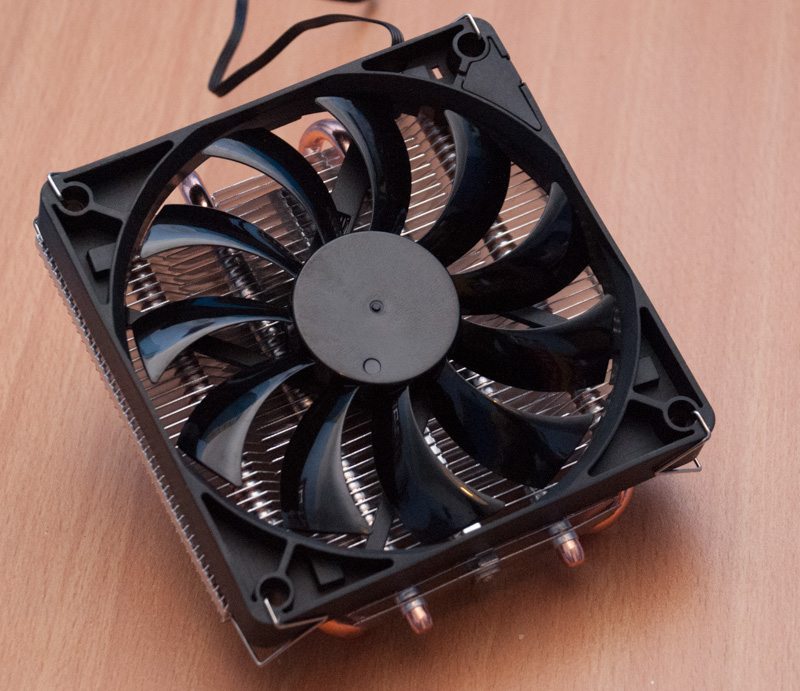
Gelid Solutions are a company who’s products we review on a regular basis. They make some of the best value for money CPU coolers on the market, a great selection of fans to suit a wide variety of needs and probably the best thermal paste on the market – GC Extreme. Today we have something very innovative, if not majorly exciting, nonetheless it still fills an important market segment. The Gelid Slim Hero is a low profile CPU cooler that is aimed at the space constrained end user, the HTPC owner and someone who is also on a tight budget, wants good bang for their buck and likes a reasonably silent system too.
You can see the full specifications of the Gelid Slim Hero here on the Gelid website, but the basic jist of the design is four 6mm heatpipes, a slim 120mm PWM fan and a total height of just 59mm. The Gelid Hero is going up against other low profile CPU coolers like the SilverStone NT06 Pro and the Noctua NH-L12 that we have already reviewed here at eTeknix. Anyone that follows our reviews on a regular basis may also be interested to know we have a review of another low profile CPU cooler coming up soon, the Scythe Big Shuriken 2 – so stay tuned for that.
Anyway, back on topic, and the Gelid Slim Hero is going to be supporting all modern sockets except LGA 2011. In most circumstances this CPU cooler is going to be ideal for cooling low heat processors like Core i5 and Core i3 processors from the Sandy and Ivy Bridge generations. On the AMD side this CPU cooler would also be perfect for FM1 and FM2 APU powered HTPC and small form factor systems. What’s nice to see is that even though this is a budget conscious product, Gelid are still offering a 5 year warranty and include a tube of high quality GC2 thermal paste to help you get the most out of this unit.
Onto the packaging first and the front of the box gives you an image of the Slim Hero and points out the key features, four heat pipes and a PWM fan.
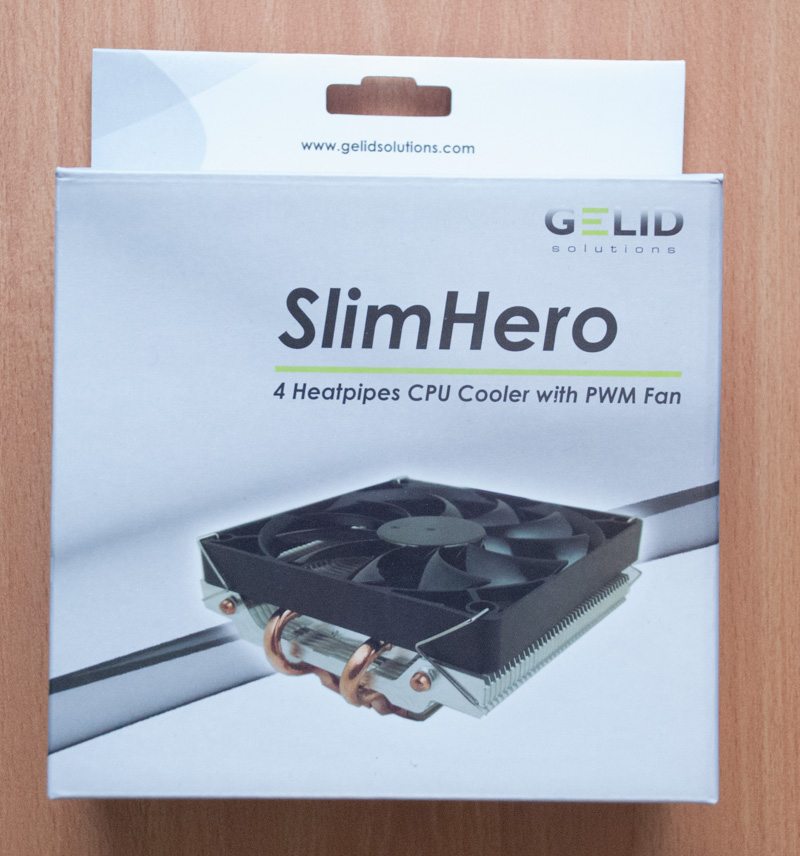
The back gives you some detailed socket compatibility information, shows you the mounting components (which we will show you on the next page) and has the obligatory Gelid airflow concept diagram that shows you how the cooling works on this particular CPU cooler.
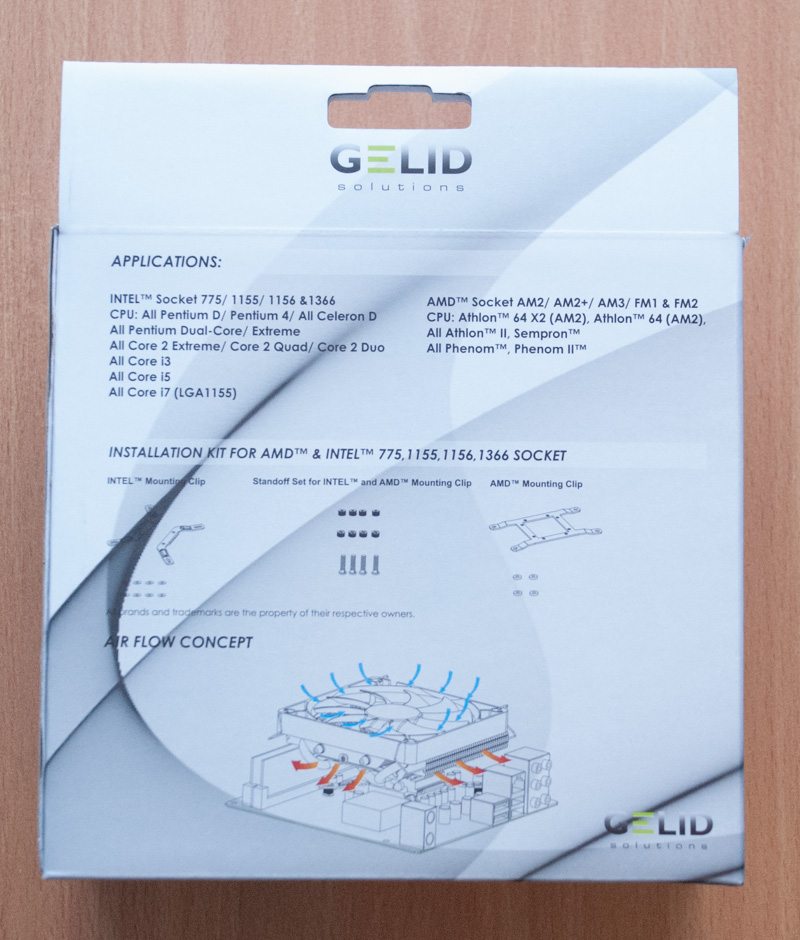
Inside the box we find the Gelid Slim Hero CPU cooler heatsink and fan, an instruction manual, mounting brackets and a bag full of other mounting hardware.
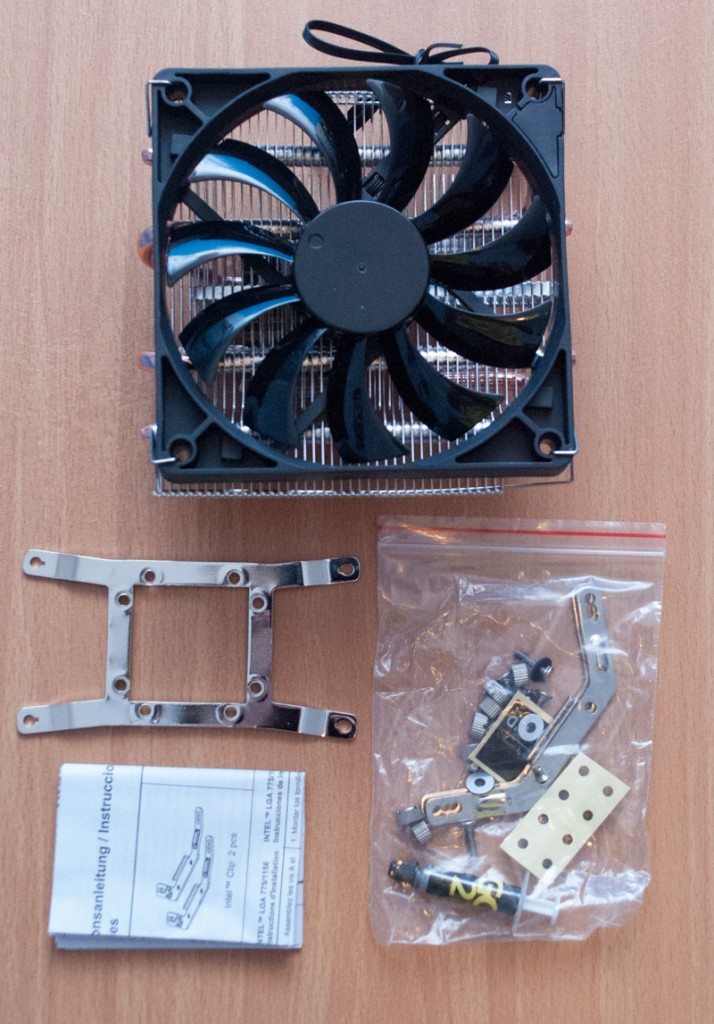
From the top we can see the aesthetics are dominated by the slim 120mm black PWM fan. This fan is actually a variant of the Gelid Slim 12 fan we already reviewed and I must say it is an excellent fan design.
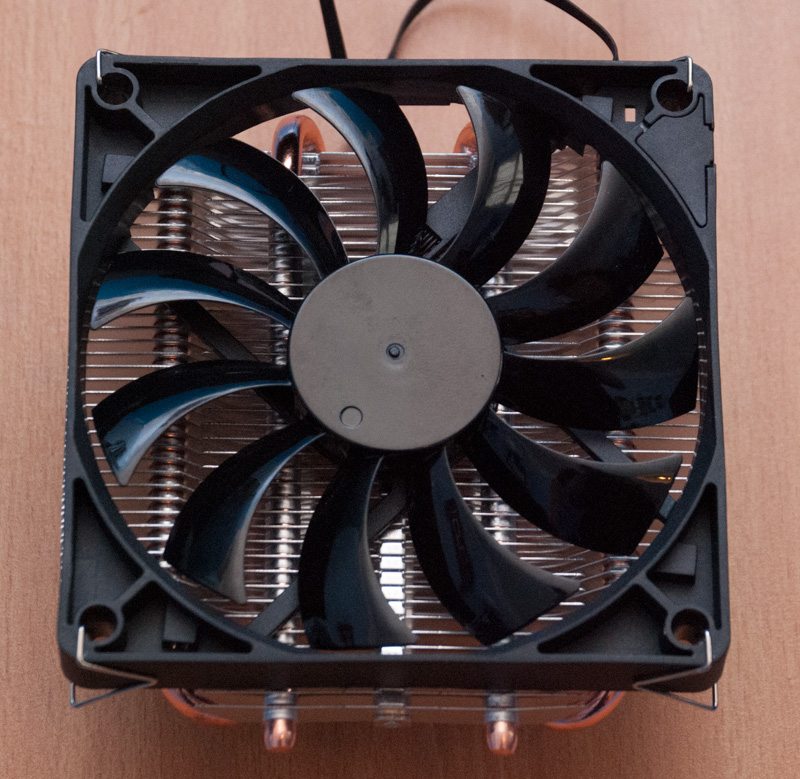
From the base we can see the rather intriguing heat pipe arrangement. There are four heat pipes of which two come out each end and curve into the heatsink stack.
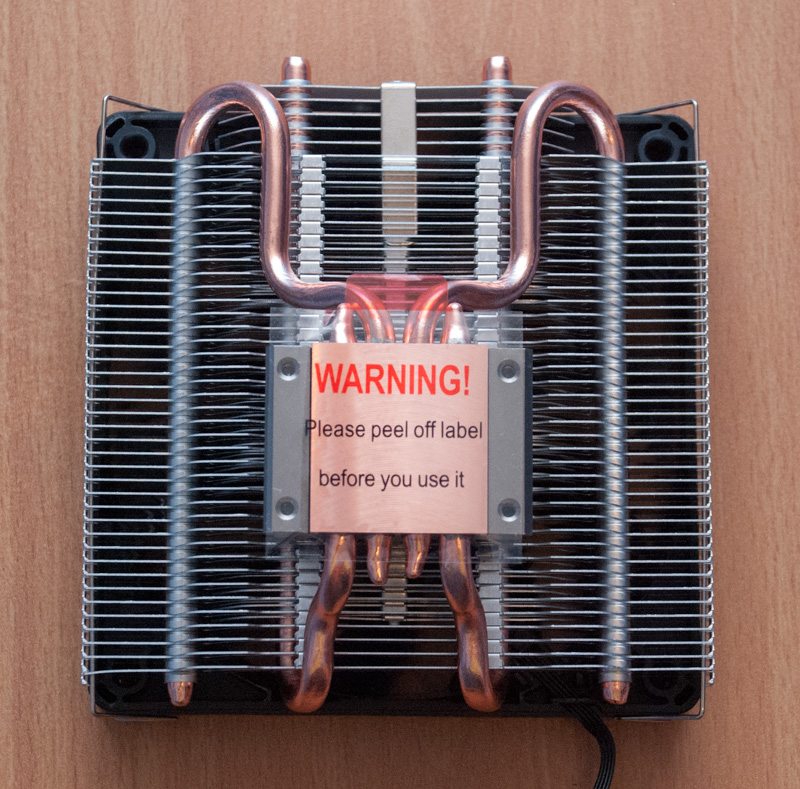
Here you can see the low profile nature of the design, with a total height of just 59mm the Gelid Slim Hero is an excellent choice for a small form factor system or HTPC.
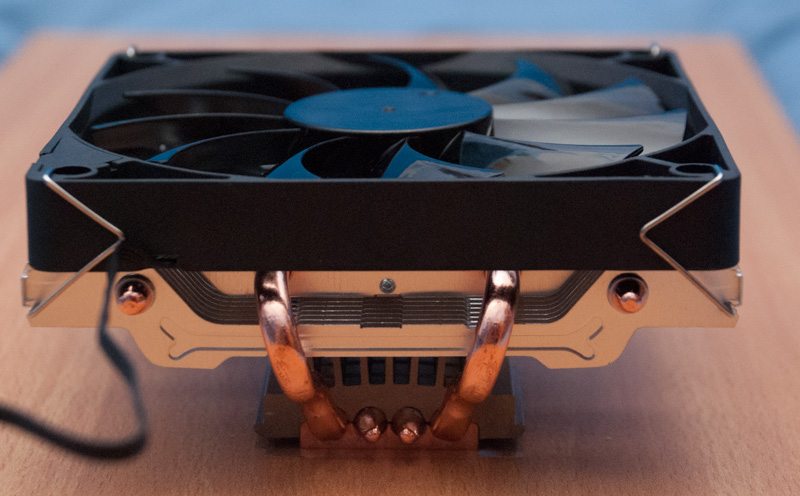
The slim fan is held in place by two metal fan clips on each side. These are easily detachable should you want to change the direction of the airflow.
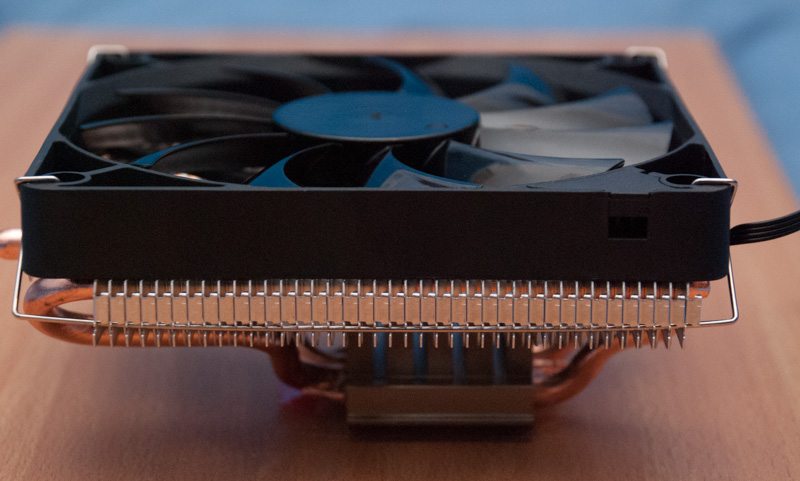
From the front you can see those four heat pipes a little better, it really is a complex arrangement that has been designed entirely with height in mind.
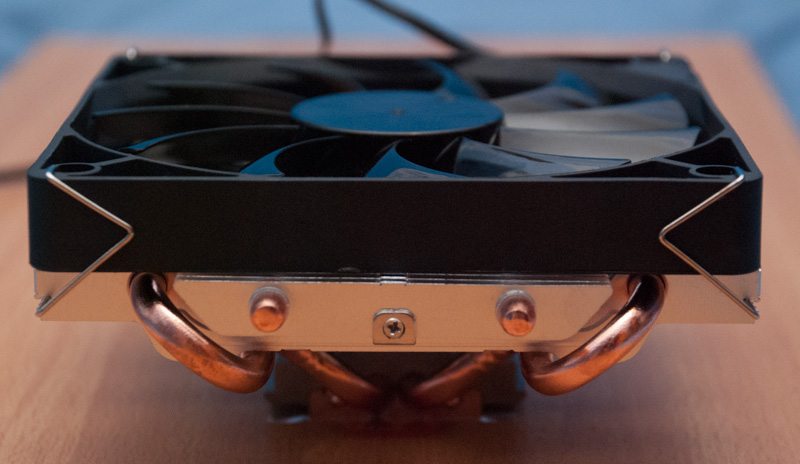
Here you can see a close up of the front of the slim 120mm fan, we reviewed a similar Gelid Slim 12 fan not that long ago.
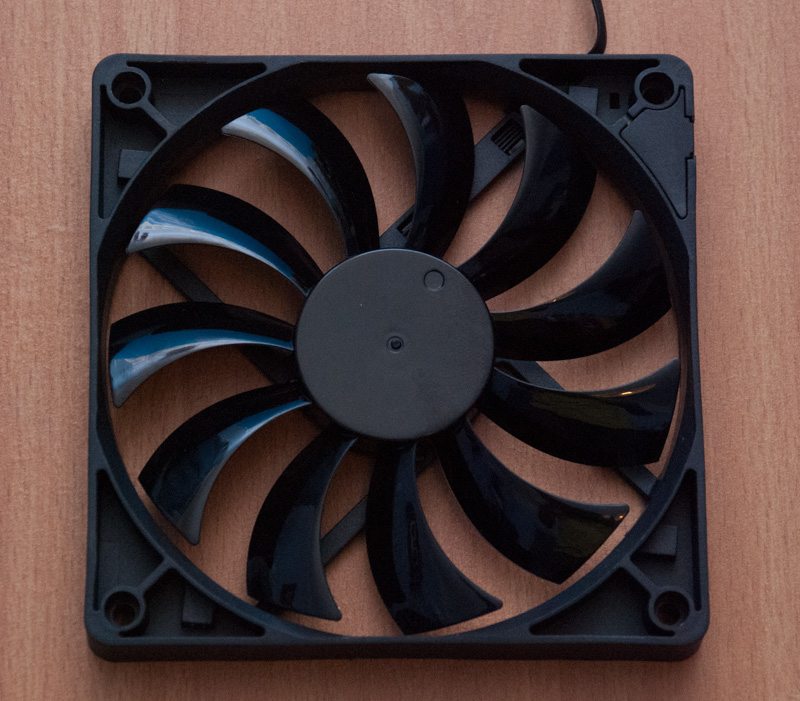
From the back you can see totally sleeved and blackened cables, this is very nice to see and keeps the aesthetics clean.
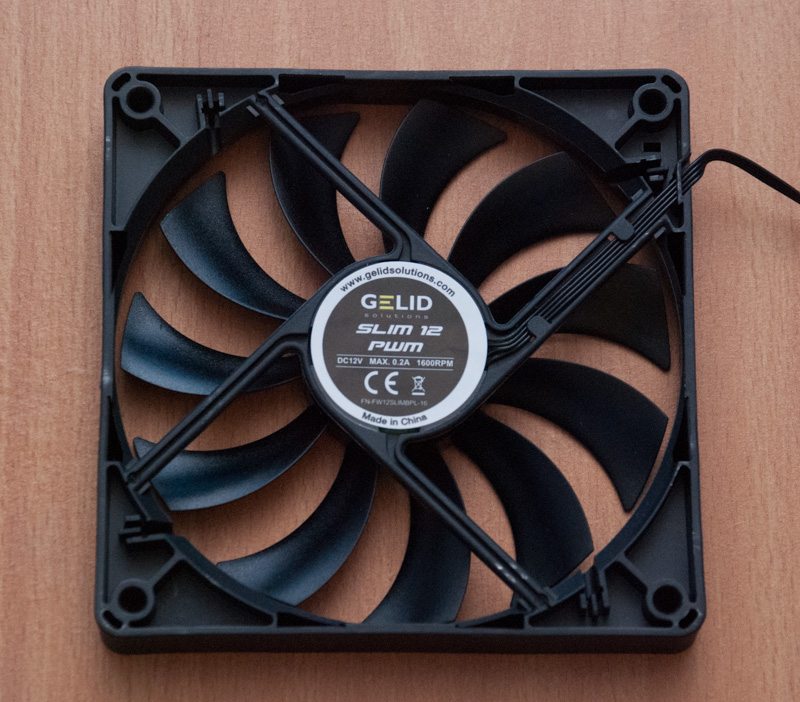
With the fan removed we can take a closer look at the heatsink. Here you can see that the heatsink is actually quite a low density but you would expect this from such a cost-effective unit.
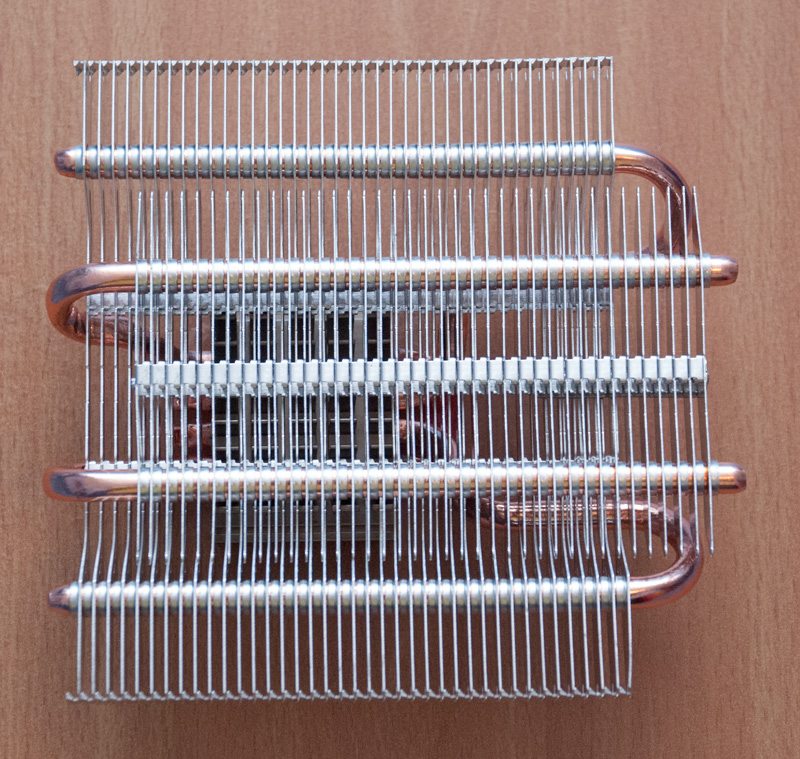
From the bottom we can see more closely the solid copper base and four heat pipes which bend quite a lot. I know each bend of the heat pipe does actually reduce its cooling effectiveness, aka ability to move heat, so I am wondering how well the performance will shape up with all these bends.
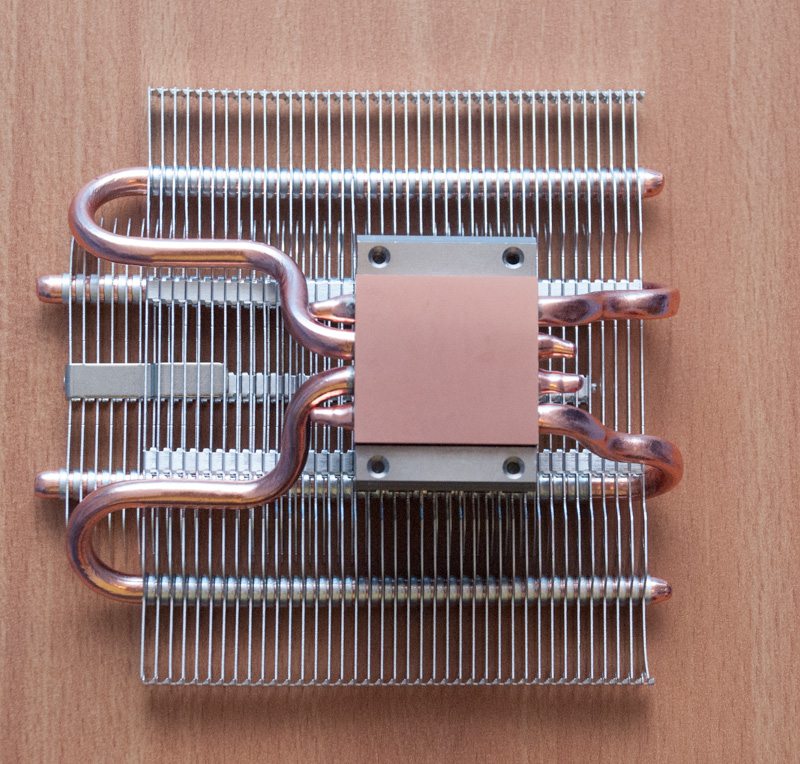
You can also see from this angle a sort of “mini heatsink” above the CPU contact plate.
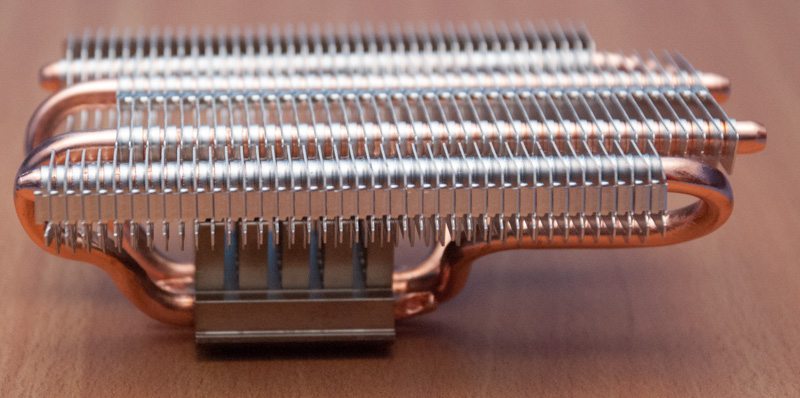
Here is a close up of the front without the fan.
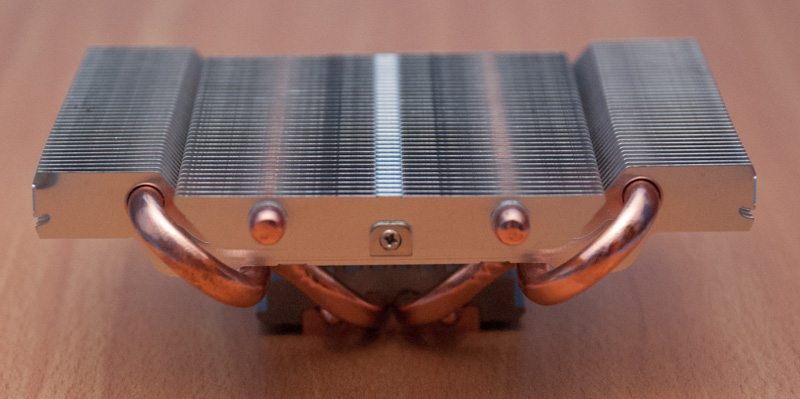
Here is a close up of the rear without the fan.
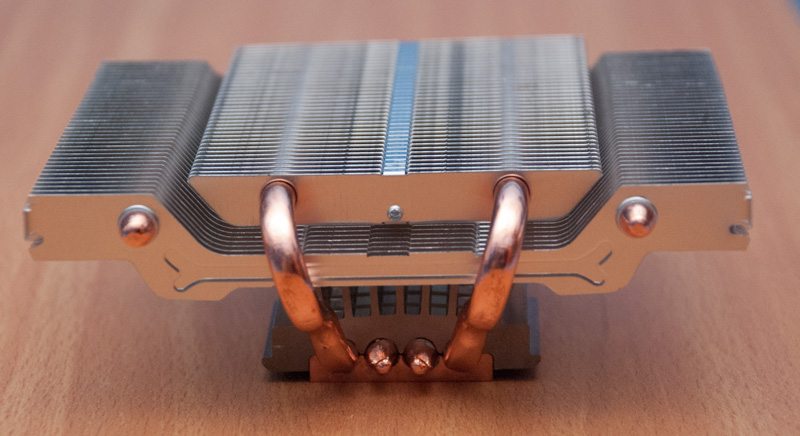
Here you can see all the mounting accessories. We have four screws for mounting the brackets, four screws for mounting the cooler, four nuts for attaching the screws to the cooler, four nuts for attaching the cooler to the motherboard, 8 motherboard spaces (4 for each side of the motherboard mounting holes), four spacers for the AMD platform, some GC-2 thermal paste, AMD mounting brackets, Intel mounting brackets and a Gelid sticker.
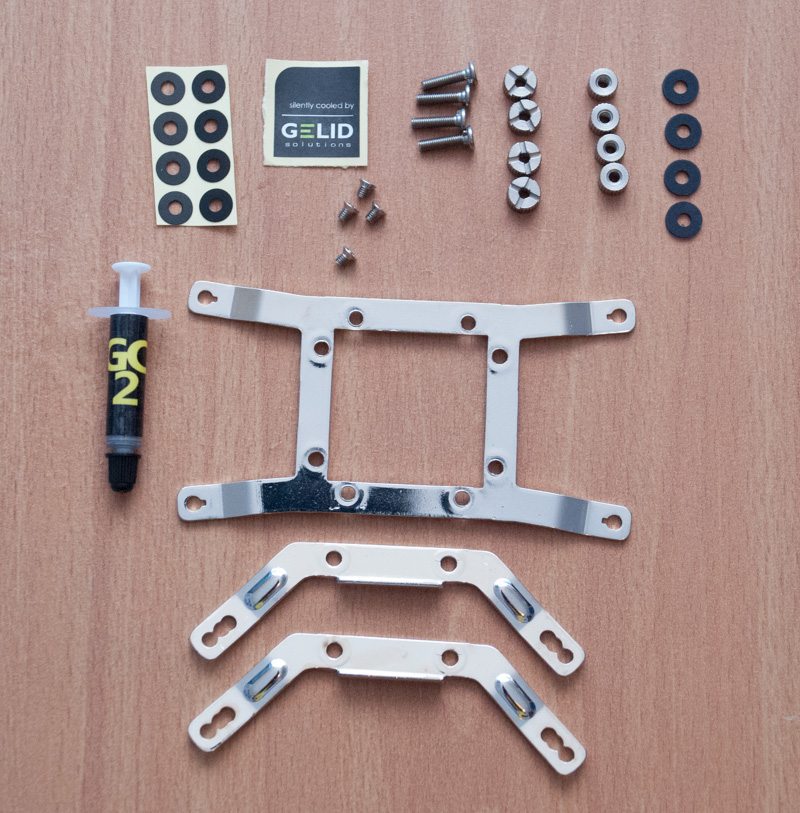
This is what the Slim Hero looks like with the Intel mounting brackets and screws fitted.
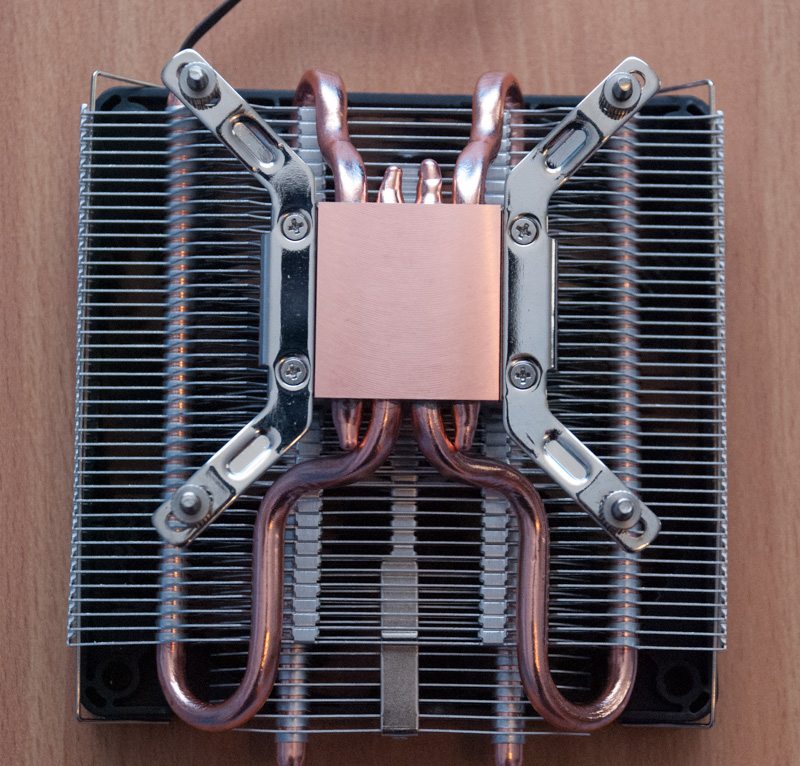
Here you can see the back of the motherboard with the cooler fitted, it requires four nuts to be screwed in firmly and no backplate is required.
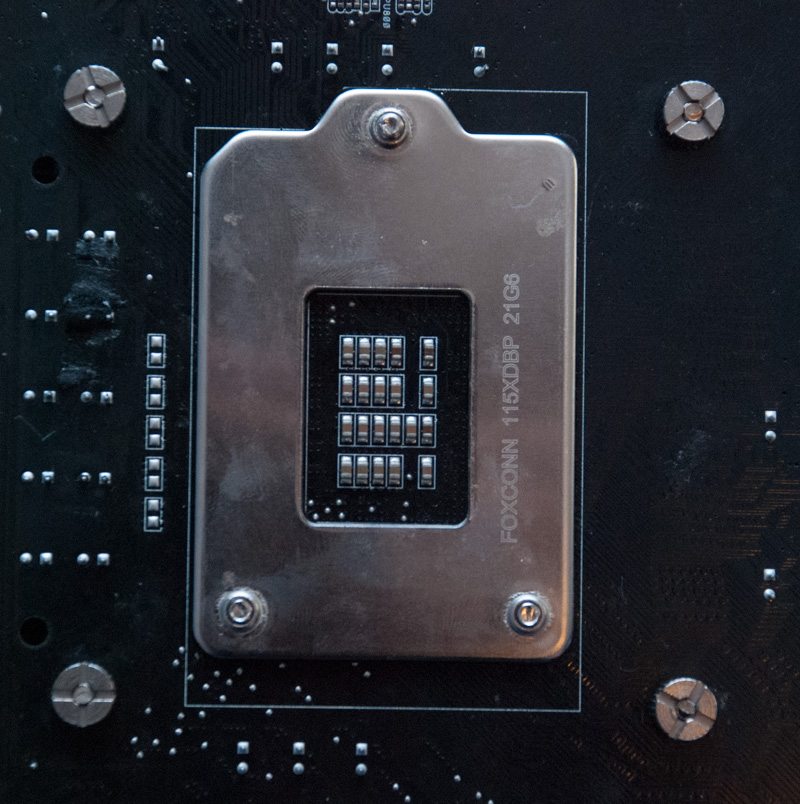
From the top you can see the Gelid Slim Hero blocks one RAM slot out of 3 so you will need low profile RAM to populate all four RAM slots on LGA 1155. On mini-ITX and Micro-ATX motherboards it would block two RAM slots as there is less spacing between the RAM and CPU socket area on these.
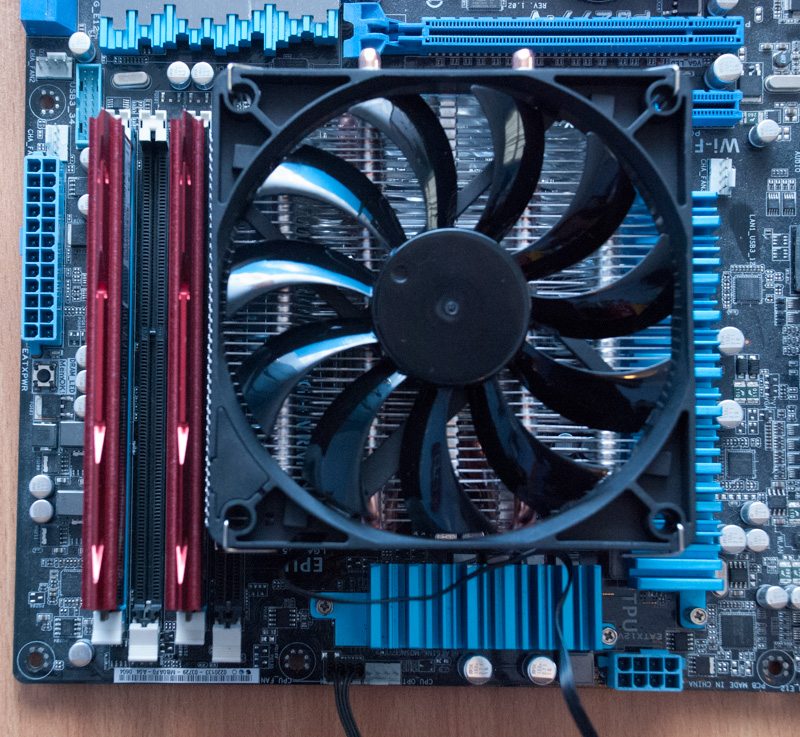
Here you can see the RAM clearance a little closer. It is a very tight fit indeed.
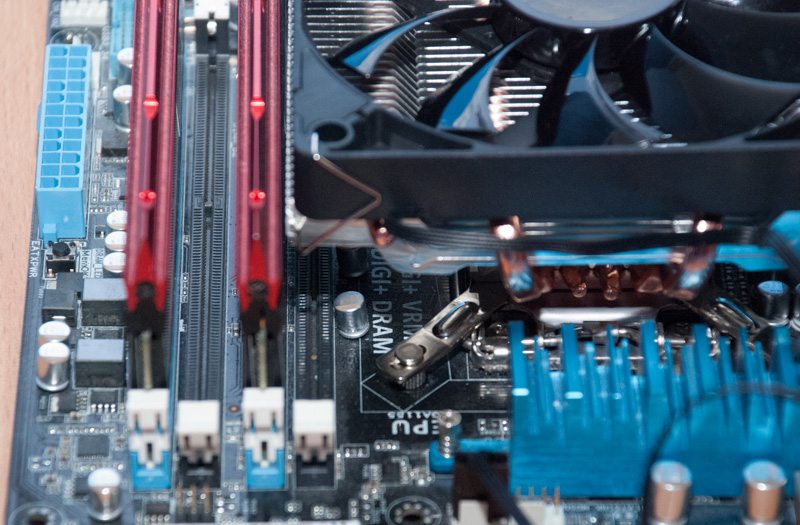
We always use the same test system and tests with CPU coolers that we compare against each other. The full specifications of our test system are as follows:
Test system:
- ASUS P8Z77-V, LGA 1155 socket, Z77 chipset
- Intel Core i5 3570K with Gelid GC Extreme under the IHS
- 8GB G.Skill Trident X 2400MHz DDR3
- AMD Radeon HD 5870 1GB
- 128GB Kingston SSDnow V100 (Boot Drive) and Samsung F3 1TB (storage)
- Antec High Current Gamer 620W
- Cooler Master Test Bench v1.0
We’d like to say a big thank you to ASUS, Antec, Kingston, Cooler Master and Intel for providing components that makes this testing possible.
Testing Methodology:
- We always use Gelid GC Extreme thermal paste to make sure testing reveals the efficiency of the tested coolers not the efficiency of the bundled thermal paste.
- Prime 95 is run for 10 minutes and then the average maximum temperatures as recorded by CPUID HWMonitor are noted
- The average temperature across the four cores is taken on our quad core processor
- Fans are mostly left to operate at default PWM profile speeds and with maximum fan speed for reference.If PWM functions are not supported then fixed fan speeds are used and sometimes a low noise adapter if appropriate/provided. If fixed fan speeds or low noise adapters are used it will be clearly pointed out either on the graphs or in the write-up.
- All default result entries on graphs are for PWM performance unless otherwise specified. A variety of fan speed results are done for a particular product review and then removed from the graphs in future reviews of other products to avoid clutter. If you would like to see more fan speed results for a particular product please check its individual review.
- For watercooling tests all pumps have been operated at 12 volts directly from the power supply
- Delta temperatures are always used (Observed temperature minus ambient temperature) and we keep the ambient at 22 (+/- 1) degrees for all testing . Delta temperatures should correct for any marginal ambient differences between 21-23 degrees.
- Acoustic measurements are taken 10cm horizontally away from the CPU cooler with the VGA fan disabled, hard drive in idle and power supply isolated. These are taken at desktop idle and Prime95 load.
- The cooling performance tests are run at stock 3.4GHz (with Intel Turbo up to 3.8GHz) and overclocked 4.5GHz (1.35v) settings. Voltages are fixed to prevent inaccuracy between comparisons.
- All other coolers in the graphs have been tested under identical settings so are fully comparable.
- Each test is repeated 3 times with 3 remounts for consistency of results
- There is approximately a 1 degree celsius margin of error in our temperature recording software CPUID HW Monitor
- There is approximately a 1.5dBA margin of error with our Benetech GM1351 decibel meter
Software Used
At stock with PWM speeds we can see the Gelid Slim Hero performs admirably for its height and price point.
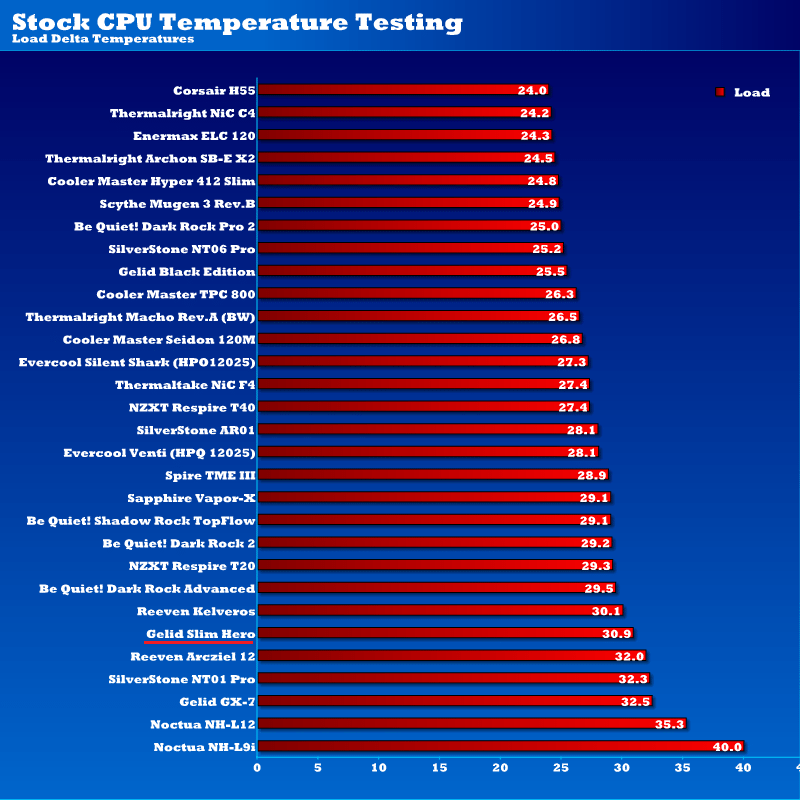
Its acoustic performance was exception and the provided slim fan is virtually silent when operating at PWM speeds.
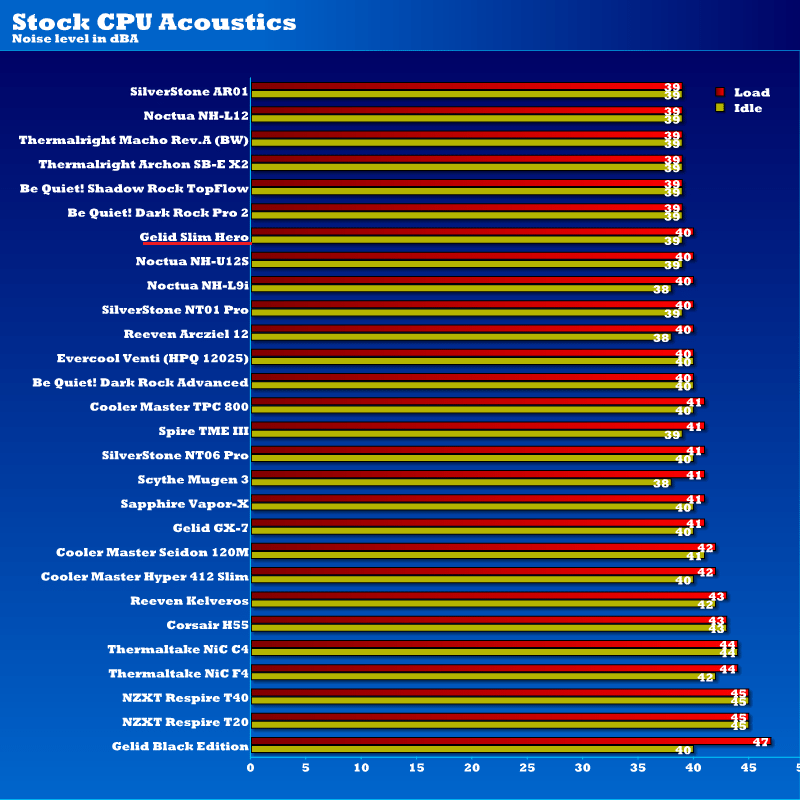
Overclocking saw the Gelid Slim Hero fall back quite a lot. Indeed it wasn’t really cut out for this but it still managed to survive our testing procedure and keep an i5 3570K at 4.5GHz with 1.3 volts for 10 minutes. With PWM speeds it performed similarly to the more expensive but smaller Noctua NH-L9i. With maximum fan speed it shaved off a further 4 degrees and managed to come close to the Noctua NH-L12. The performance of this unit is very impressive given the size, price and noise levels.
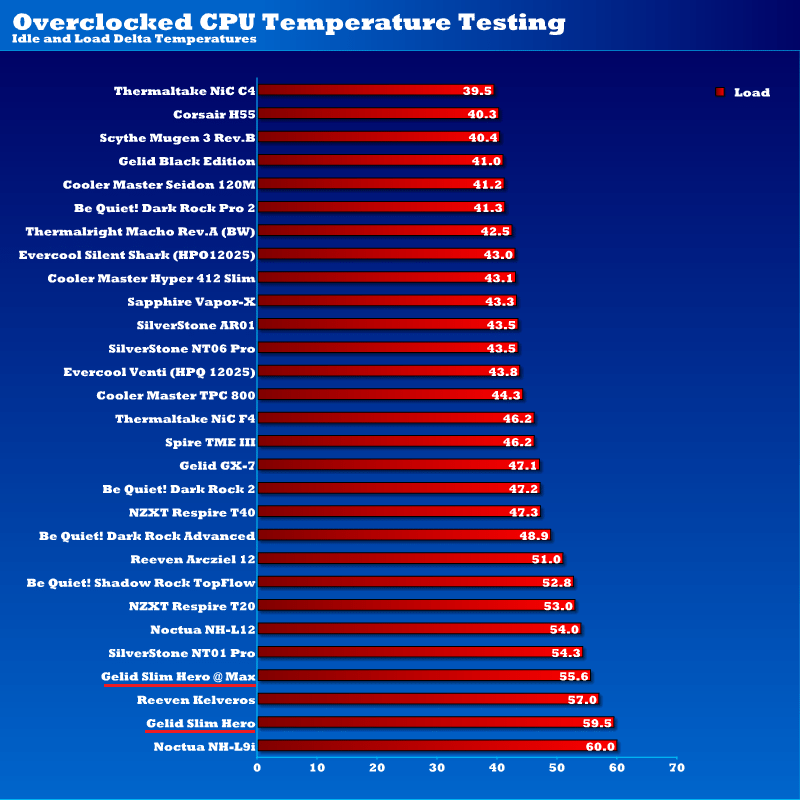
Here you can see the noise levels. At PWM it was whisper quiet and at 100% while loud, it certainly isn’t uncomfortable. Inside most cases you’d barely notice it. Even though certain coolers can have the same dBA level, the pitch of the noise is very important too, the pitch of the Gelid Slim Hero fan is very subtle unlike some fans which can be high pitched and “whiny”.
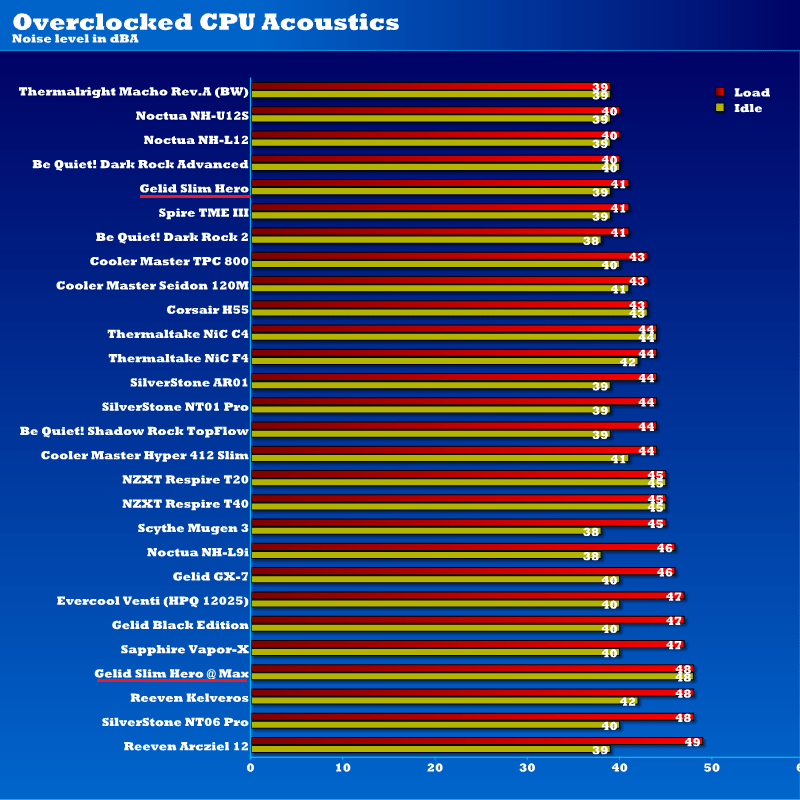
Gelid’s Slim Hero is going to come to market at an MSRP of $32 which is quite a low price point. We have seen it listed in the UK for £25 which is the best price we could find at the time of writing. I think it is important to consider why the Gelid Slim Hero has been created, it is certainly not to be a high performance low profile CPU cooler, but to be one of the most affordable options. If you consider the SilverStone NT06 Pro costs £47, the Noctua NH-L12 costs about £43 and the Noctua NH-L9i costs £35 then you can see that the Gelid Slim Hero is almost a steal at its low price of about £25. Sure it may not have the same level of performance, but you certainly get what you pay for – if not a little bit extra.
Pros
- Highly affordable price
- Only 59mm high
- High quality and silent fan
- Included high quality GC2 thermal paste
- Lightweight
- Doesn’t need a backplate, simple mounting procedure
- Good performance for the price and size
- 5 year warranty
Cons
- No LGA 2011 support (although LGA 2011 is hardly the platform of choice for HTPCs and Small Form Factor systems)
- Blocks 1 or 2 RAM slots depending on your motherboard
- Struggles with high overclocks (but this is expected as it is intended for HTPCs)
eTeknix says: As a low profile CPU cooler the Gelid Slim Hero is one of the best value for money solutions on the market. It ticks all the right boxes and is a viable solution for anyone looking to run a HTPC or small form factor system without wanting to spend a fortune on a quiet and effective CPU cooler.
 Thank you to Gelid for providing this review sample.
Thank you to Gelid for providing this review sample.



















